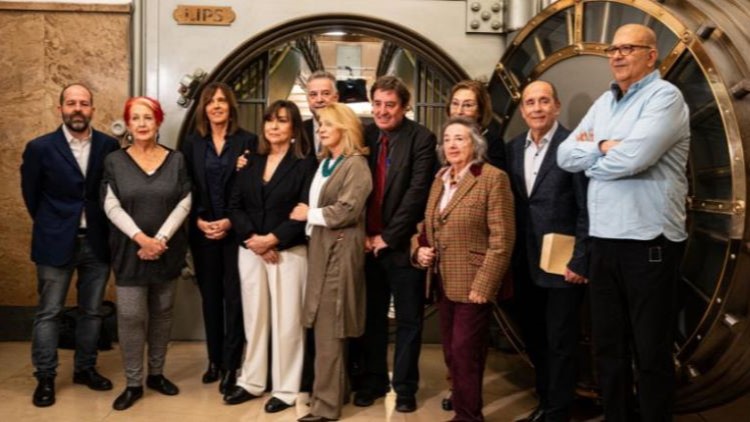The Diplomat
Last Monday, the Caja de las Letras of the Instituto Cervantes received the legacy of the 50 years of uninterrupted history of Informe Semanal, the reference Saturday news program on Spanish Television.
Specifically, the legacy includes scripts, photographs, journalistic articles, DVDs and even a memory that contained the speech with which the Queen congratulated the program on its fiftieth anniversary, two decades after she herself, as journalist Letizia Ortiz, presented the program. longest running broadcast on Spanish public television.
The general director of RTVE, Elena Sánchez; the deputy director of Informe Semanal (Pablo Ramírez), as well as well-known journalists (Rosa María Calaf, Carmen Sarmiento), former directors (Baltasar Magro, Elena Martí), filmmakers (Raúl Alda) and presenters (Mari Carmen García Vela, Ana Blanco) deposited one after another in box number 1396 this collective legacy, made up of vestiges of half a century of information (1973-2023) on media such as paper, digital memory, DVD or photographs, as well as various objects.
During the event, the director of the Instituto Cervantes, Luis García Montero, stated that “information and democracy go hand in hand” and defended “serious journalism” because it is “an exercise of primary necessity for democracy and coexistence.” Likewise, he praised the “truthfulness and professional responsibility” of those who work at Informe Semanal through “a public television that works with rigor and serves the interest of citizens.”
The veteran Carmen Sarmiento, who was the first woman journalist on the first team of Informe Semanal, left a framed phrase that she has made her flag: “I will continue fighting so that women stop being the south of men, the south of the world.” , the south of all possible norths.” She also left an ankle bracelet from the Afar women, a nomadic Ethiopian people, as a symbol of the numerous trips she made for Informe Semanal and her fight for women’s rights and the denunciation of social inequalities.
The journalist Elena Martí deposited a newspaper clipping with the news of her arrival to the direction of the program in 1990 and the challenges she faced for the new decade. Raúl Alda, producer of the weekly space between 1985 and 1995, claimed the importance of the production work and left a photograph where he himself appears in Panama, shortly before the United States military operation in 1989 to overthrow the dictator Noriega. The legacy of Baltasar Magro, author of hundreds of scripts for the program and director in 1988-1989 and 1996-2004, was a script in English about 23-F, which was nominated for the International Emmy Awards, in addition to a photo of everything his team in March 2003, after celebrating its first 30 years.
One of her best-known faces, Mari Carmen García Vela, presenter between 1983-1988 and 1988-1996, deposited a DVD with the three stories that had the most impact on her: Colombia under the volcano (1985), with the agony of the girl Omayra; Hotel Kigali (1995), about the Rwandan genocide; and the program on November 4, 1995 in which she had to announce live the assassination in Tel Aviv of the Israeli leader Isaac Rabin.
The well-known RTVE reporter and correspondent Rosa María Calaf bequeathed an official t-shirt from the iconic Reagan-Gorbachev summit of 1988, as a symbol, she denounced, of so many top-level political meetings that “too often end in nothing,” and Ana Blanco, Visible face of the News News for decades and now presenter of Informe Semanal, she symbolized her journalistic work with a microphone and a pocket in which the interviews and reports are recorded.
The deputy director of the program, Pablo Ramírez Pérez (replacing the director, José Carlos Gallardo), left an illustrated copy of the script of the special program on the 50 years, recorded at the Guggenheim Museum in Bilbao, and the president of the RTVE Board of Directors , Elena Sánchez, deposited the aforementioned chamber report that contains the speech with which Queen Letizia wanted to congratulate the program on its half-century of history. The then journalist Letizia Ortiz presented this space in the summer of 2000, during her first years at TVE.






